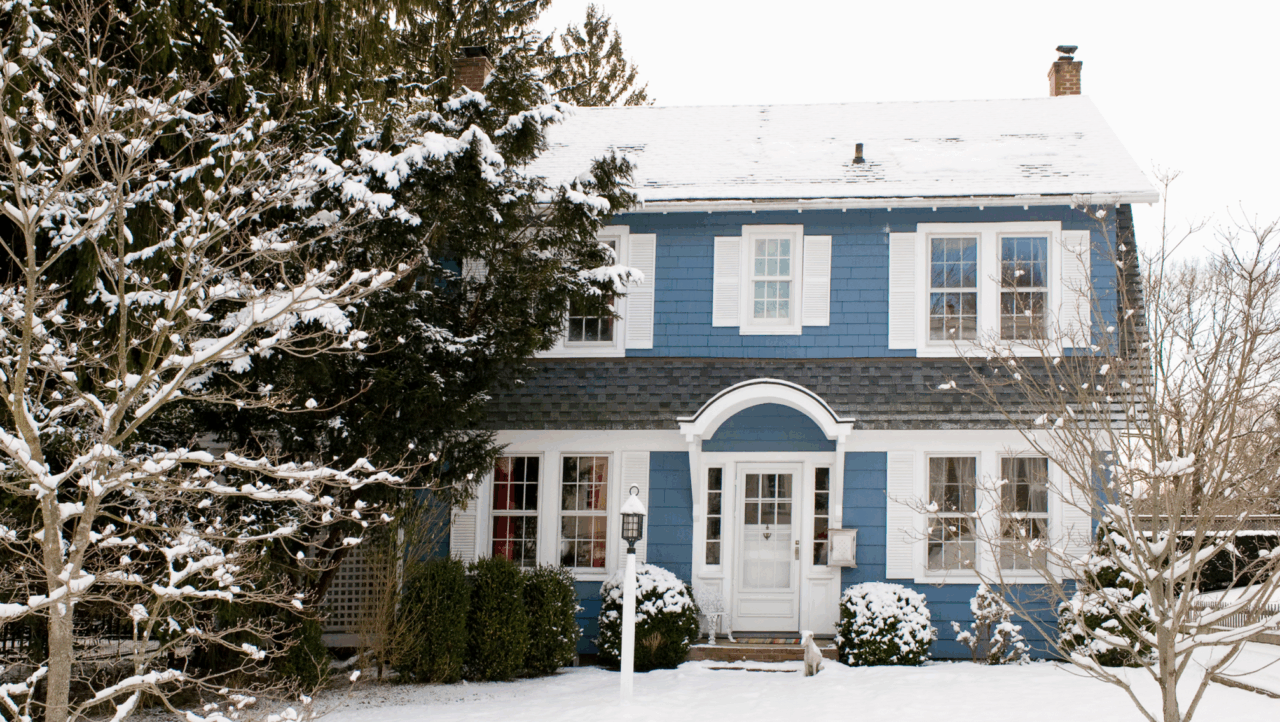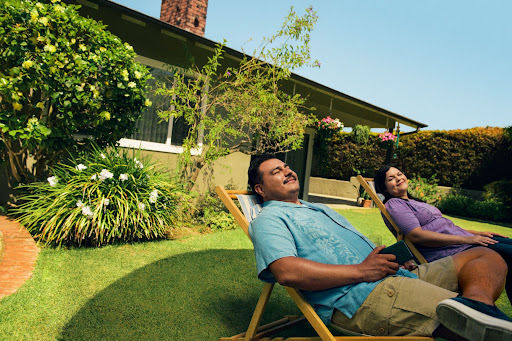Interior Design Styles 101: 22 Décor Styles You Need to Know
You've probably heard of Art Deco and Coastal style, but how much do you know about Biophilic design, Grand Millennial and Japandi?


Written by May Ortega on December 15, 2025
Décor styles come in many forms, from Art and Crafts to Japandi. If you're looking at homes online and can't tell transitional from traditional, it may be time to learn about the history and key elements of some of the most popular interior design styles.
If you're preparing to sell, mastering these styles can be useful for making your home stand out— in fact, sellers can easily bring these looks to life online using Zillow Showcase's virtual staging option to attract more potential buyers. We've narrowed down some of our favorites, and included a quiz at the end so you can test yourself on what you've learned. Good luck!
1. Art Deco
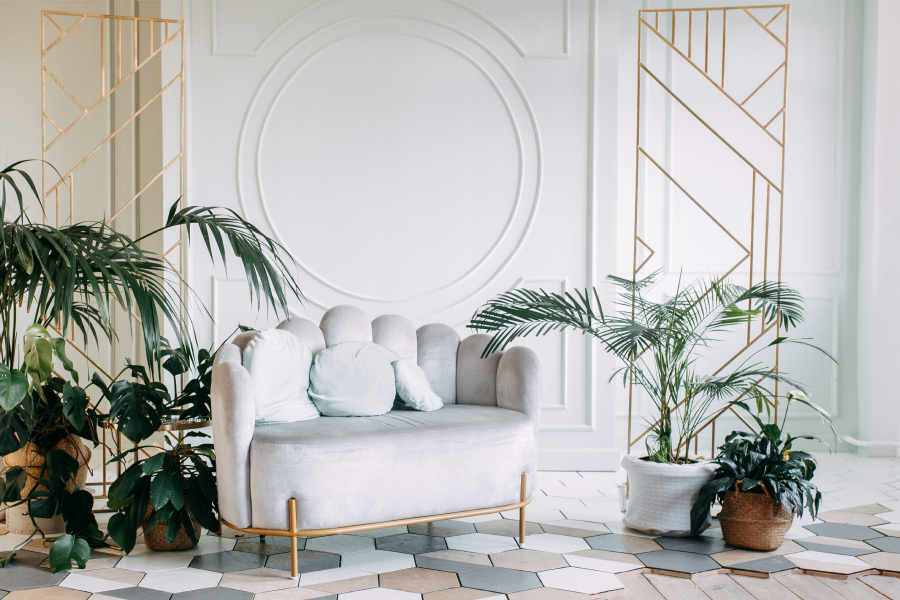
This is the look of the Roaring '20s, The Great Gatsby, the Jazz Age and all that. This sleek, urbane style combines the classical with the exotic and draws inspiration from skyscrapers, zeppelins and King Tut's tomb. Art Deco interiors have rich colors, bold geometric shapes and patterns arranged in classical symmetry, elaborate detail and art- and travel-related accessories. Furniture has big, sleek curves, like a Parisian club chair, and rooms have lots of mirrored or crystal surfaces. See it for yourself in this home in Hamilton, Montana with layered, arched fireplaces and snaking ceilings.
2. Arts and Crafts
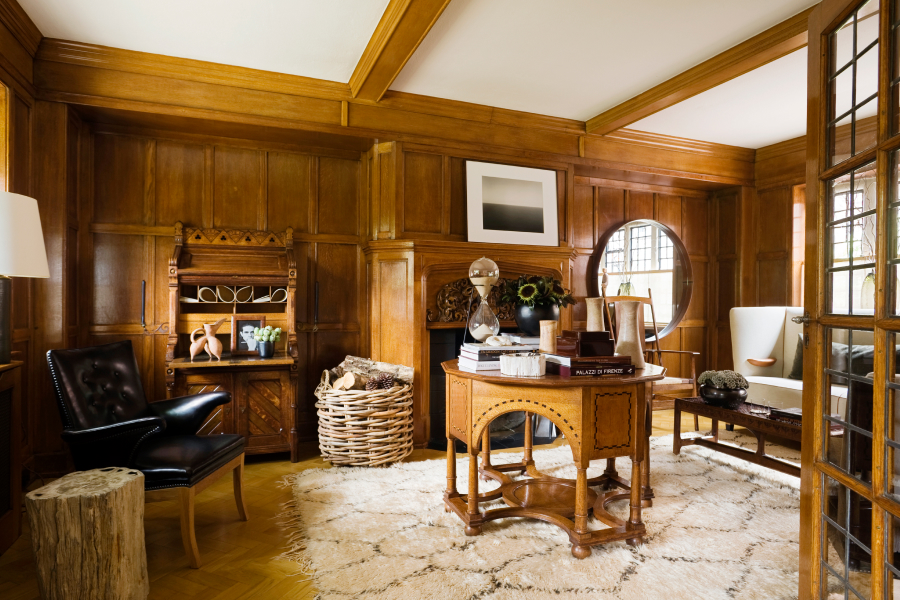
The Arts and Crafts movement was an early 20th-century backlash to Victorian excess and Industrial Age mass-production. Arts and Crafts inspired Craftsman and bungalow house and décor styles that are popular to this day. Arts and Crafts interiors prize artisan-made items like pottery, stained glass lamps and wood furniture. They use a sophisticated palette of olive green, purples, vermilion red and earthy tones — all complementary to natural wood to reflect the look of the natural world. And because functionality is a major emphasis in Arts and Crafts bungalows, you'll see a lot of open floor plans and built-ins alongside tons of woodwork. Frank Lloyd Wright was a major player in this movement.
3. Biophilic (Naturalist)
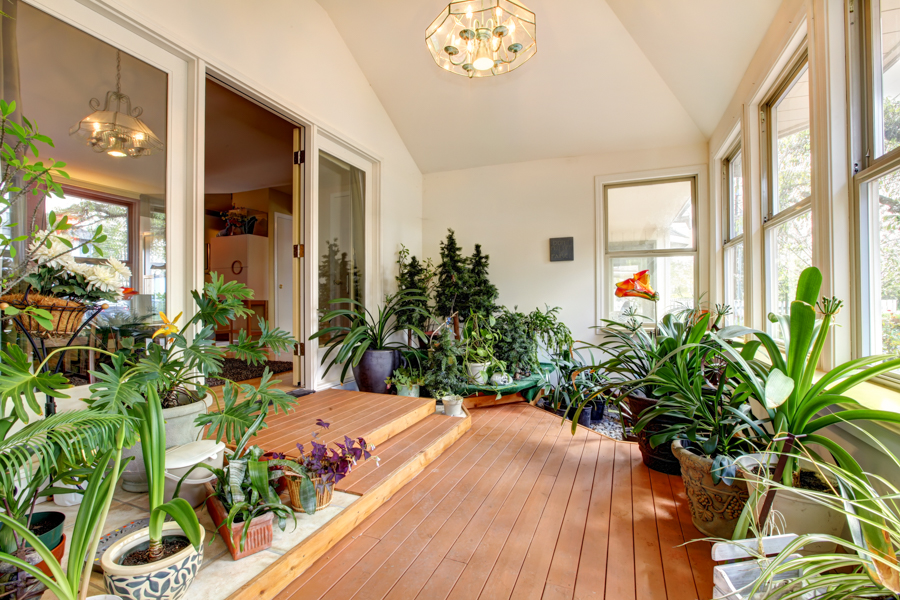
One of the hottest home styles right now is biophilic design, characterized by colors and elements of the natural world. Biophilic design draws its name from biophilia, a word popularized by naturalist E.O. Wilson to describe humanity's innate urge to connect to other living species. In a home, this means using greens, browns and blues that draw from the sky, trees and earth. Bring biophilic design into your home by painting a room or two a shade of green color-matched to the sea glass you found on the beach on your last vacation. Set out houseplants. Create an outdoor room.
4. Boho
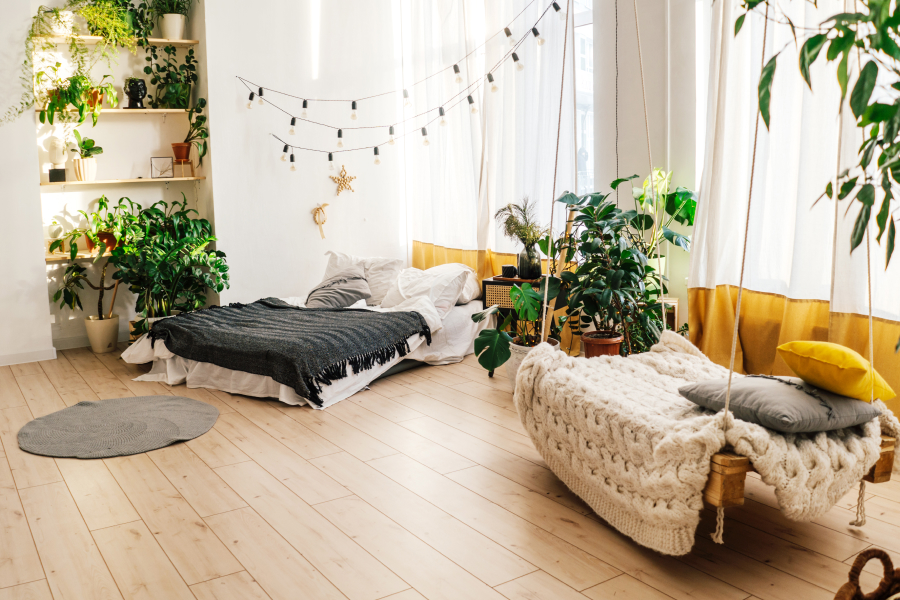
Bohemian style, or boho, is a rebellious aesthetic popularized in late 19th-century France and rediscovered in the late 1960s by the hippie counterculture. It's alive today among those who favor the aesthetic “anything goes.' Boho is versatile and incorporates new furniture and vintage flea market finds with a touch of the exotic. The style emphasizes natural materials like rattan, wood and cotton alongside jewel-toned colors. Boho is putting six artfully mismatched chairs around a dining room table, hanging a Moroccan light fixture and setting out tropical plants in Ugandan baskets. It's haute hippie where individualism, not conformity, is the goal.
5. Coastal
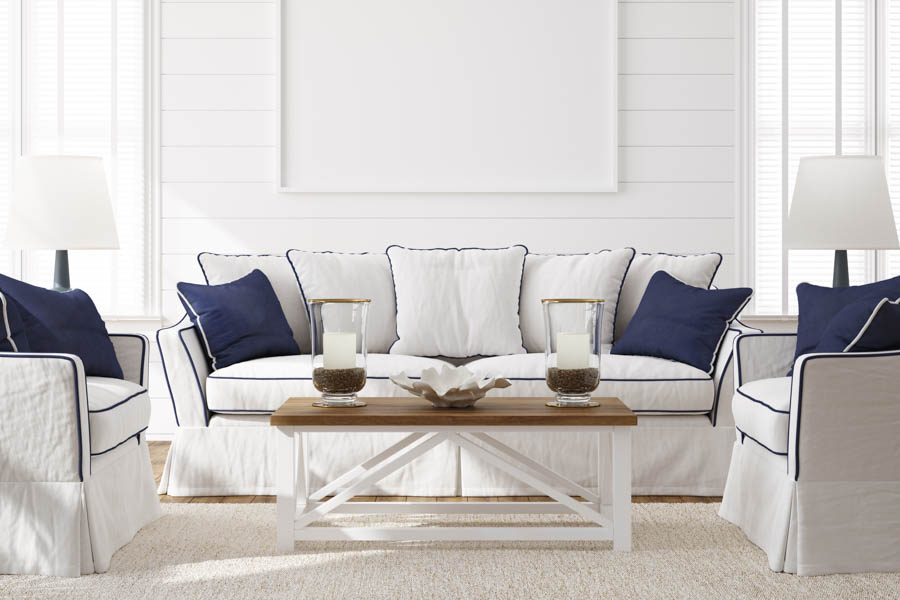
Beach chic is not just for beach houses. You can bring the sea to your landlocked home by pairing watery colors with natural textures like rattan, wicker, sisal and pale woods. To be clear, coastal is not nautical. Skip the kitschy seashells, mermaids and anchors. Coastal is sea, sand and sky. It's about making your house feel like an endless summer. That means using earth tones, layered blues, crisp whites and stripes, and filling the space with comfy furniture. It means letting in lots of natural light by keeping window treatments at a minimum; we're talking open, airy interiors that blend the outdoors with the indoors. The oh-so-trendy Coastal Grandmother look is a subset of this style. Coastal Granny is more Hamptons than 30A, with heavy cottage vibes.
6. Cottagecore
Cottagecore design is a nostalgic aesthetic that's recently exploded in popularity online, marked by a longing for simpler, screen-free times in an English countryside setting. This style is all about cozy, rustic charm as well as intentionality. Key elements include muted pastels, dainty floral patterns, heirloom or vintage furniture, and a focus on natural textiles like linen and knit throws. Cottagecore often takes a maximalist approach, layering patterns and textures, but it remains tranquil and comfortable, embodying the Danish concept of hygge (coziness). Lighting tends to be warm and ambient, relying on lamps rather than harsh overhead fixtures, and vintage or antique furniture pieces are essential for achieving that quaint, lived-in vibe.
7. Contemporary
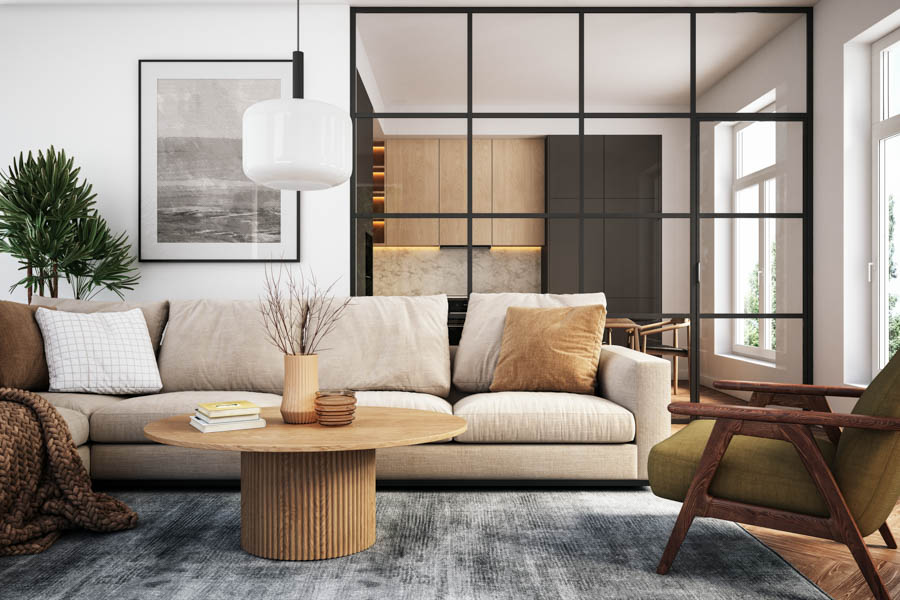
The terms "contemporary" and "modern" are often used interchangeably, but they are not the same thing. Modern refers to a design movement that arose in the early 20th century that was all clean lines, neutral colors and minimalism influenced by Picasso and Bauhaus. Contemporary, on the other hand, isn't a specific design philosophy. It's a blanket term that refers to the interior design trends that are popular right now. So grandmillennial, biophilic, bohemian and industrial are all contemporary design styles.
8. Farmhouse

Farmhouse is an umbrella term for a look that's more country cottage than city apartment. You'll come across a lot of houses staged in this style because it goes with a range of architectural types and has mass appeal. Think antique, solid wood furniture with artful blemishes, brick walls, wood ceiling beams and solid wood open shelving. Patina is key because you want the space to look like an ancestral rural homestead. Subsets of this style include 'urban farmhouse,' which made all-white interiors a fixture in the suburbs in the 2010s, and French country, which brings the sun-washed blues and yellows of a Provençal palette to the cottage-core vibe. And, if you're looking to sell your home, 'modern farmhouse' appears on Zillow's list of descriptions that helped homes sell for more than expected.
With a focus on white interiors and wood details, farmhouse interior design is the backbone of the style choices in this Maysville, Georgia home.
9. Industrial
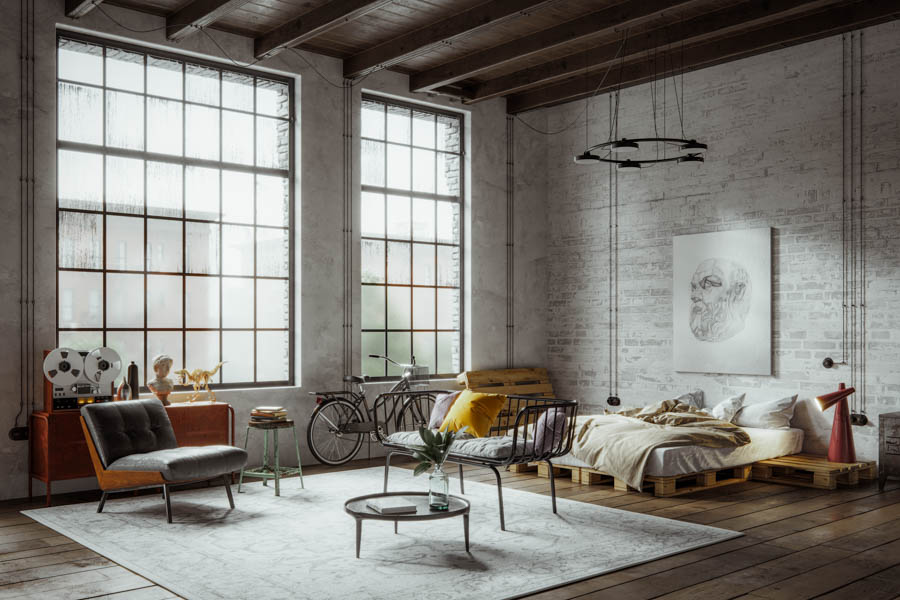
Industrial is a super casual interior design style, born when artists in need of studios turned abandoned factories into living spaces. The loft apartment, perhaps the most famous symbol of industrial décor, was born in the 1960s. In an industrial-style dwelling, brick walls and pipes are exposed, concrete floors are uncarpeted and there are few interior walls. By the late 1990s, loft apartments had gone from barebones living to luxe life, with industrial influences showing up in farmhouse and contemporary styles. Subway tile for home use and the Edison bulb came from industrial style, along with black steel-paneled shower doors and everything Restoration Hardware sells.
Industrial interior design is on full display in this Pasadena, California home that features concrete flooring, exposed HVAC ducts and granite countertops in the kitchen.
10. Japandi
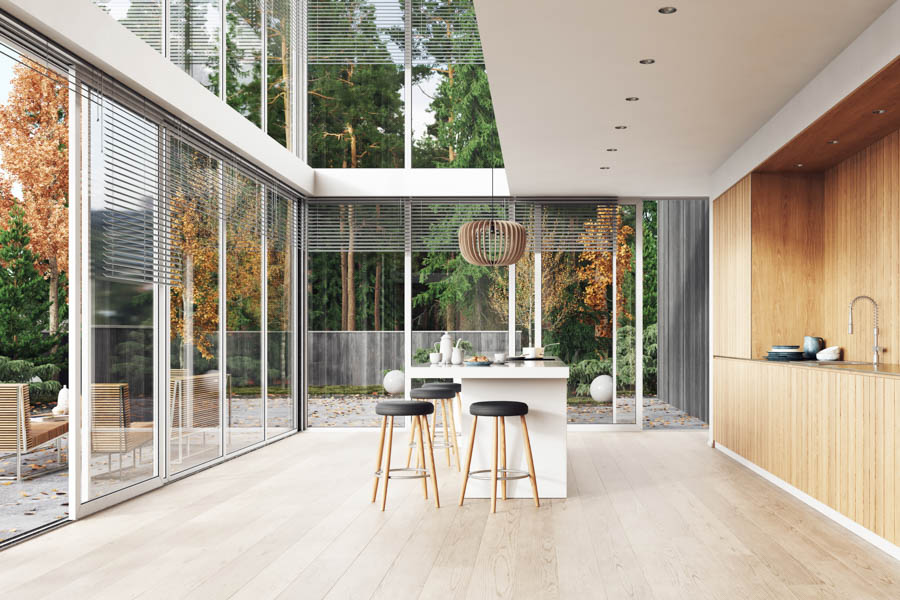
Just like its name — a portmanteau of Japan and Scandinavian — Japandi blends elements of Japanese and Scandi design. The two styles originate from opposite sides of the planet, but both revere a connection to nature and a love of clutter-free minimalism. Both incorporate natural materials like stone, wood and paper. Japandi has a darker, richer color palette than pure Scandi, so you see black, deep green, deep red and aubergine used alongside light-colored Scandi woods and minimal furnishings. Japandi interiors are a blend of earthy and airy. Slat walls are very Japandi.
This home in Sandy, Utah features a Japandi interior with clutter-free rooms that focus on minimalism and wood features.
11. Midcentury modern
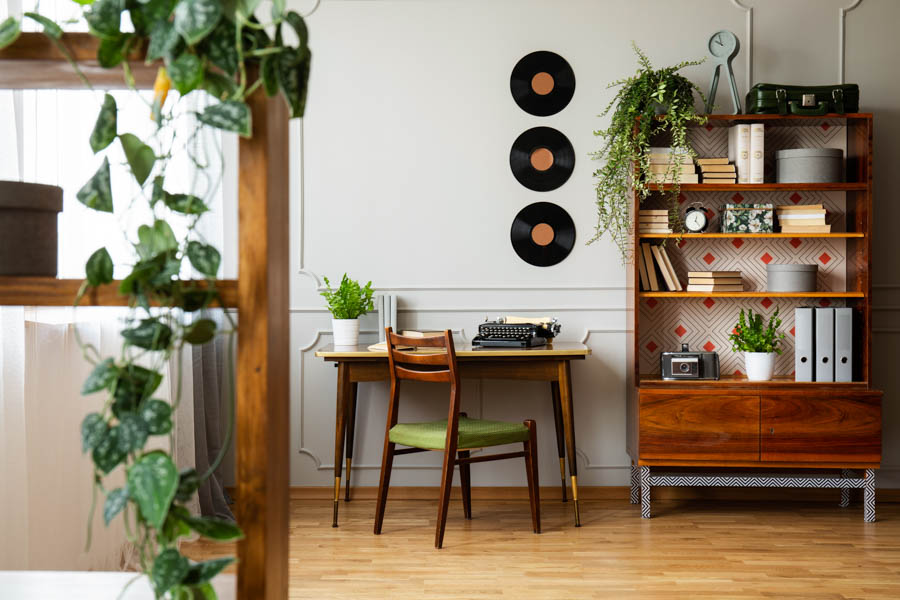
The middle part of the 20th century produced an iconic interior design style that remains popular generations after its heyday. The style grew out of early 20th-century modernism and took hold in the 1950s and 1960s when newfound technologies and an explosion in consumer spending fueled a design revolution in the U.S. suburbs. Midcentury modern, or MCM, is characterized by clean lines; simple, organic forms; minimal ornamentation and an emphasis on functionality. Think Eames or Bertoia chairs, Knoll furniture and Richard Neutra houses with glass walls and open floor plans that bring the outdoors inside. Think Mad Men set. Danish modern was a subset of this style, so Scandi is very MCM. Color palettes ranging from bright hues to muted pastels are too.
12. Maximalism
Maximalist interiors are a celebration of "more is more," embracing abundance, boldness, and joy by layering textiles, clashing patterns, and mixing design eras — and somehow, making it all work. This style is deeply rooted in self-expression; it’s about telling your unique story through a thoughtfully curated collection of things you love, not just random clutter. Successful maximalism requires visual harmony, which is often achieved by selecting a cohesive vision or a specific color palette (like jewel tones or Earth tones) and letting your belongings, artwork, and even wallpaper stand out against it. Designers often recommend using color for its powerful emotional impact, such as using nature as inspiration for a vibrant, harmonious palette. Maximalism is a continuous creative journey, allowing the space to evolve over time.
13. Rustic

This term describes a range of design styles, including farmhouse, log cabin and Tuscan styles. Rustic décor uses natural materials like wood and stone, and has an earthy, primitive feel intended to rebel against the modern era. So no metal, no plastic, no synthetic fabrics. Think oversized, handmade furniture, a palette of greens, browns and grays, rough fabrics like jute or animal hide and a cozy lodge vibe.
14. Scandinavian
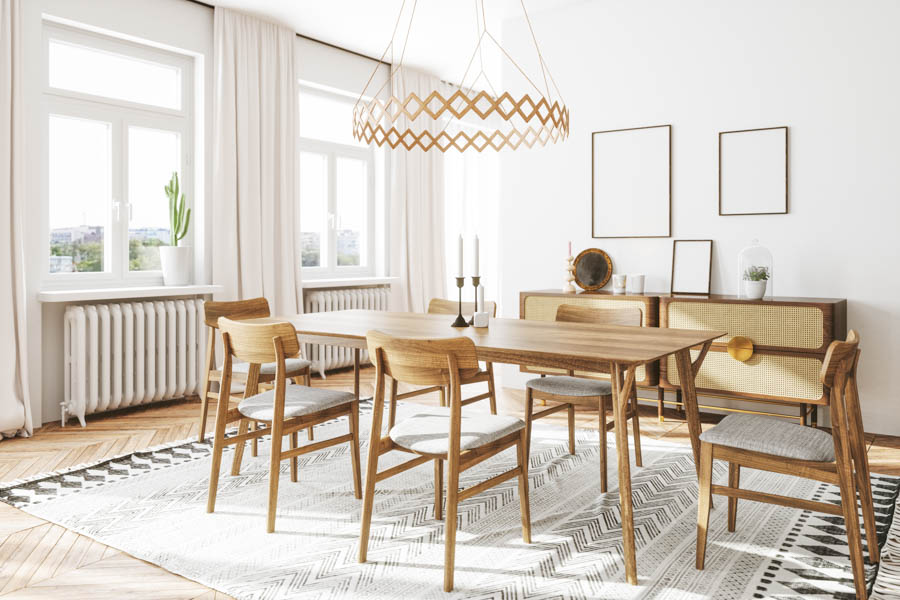
This design style takes its cues from the clean, minimal look of Denmark, Finland, Norway and Sweden. In the land of the Polar Night where the sun doesn't shine for months during the winter, interiors are full of light woods and simple color schemes of white, gray and beige. The goal of Scandi style? Maximize natural light to make a room feel airy, light and connected to nature, and bring in elements of warmth and comfort. Scandi style is about being in harmony with one's environment with a few well-made chairs, tables and a sofa versus a houseful of fast furniture.
15. Shabby chic
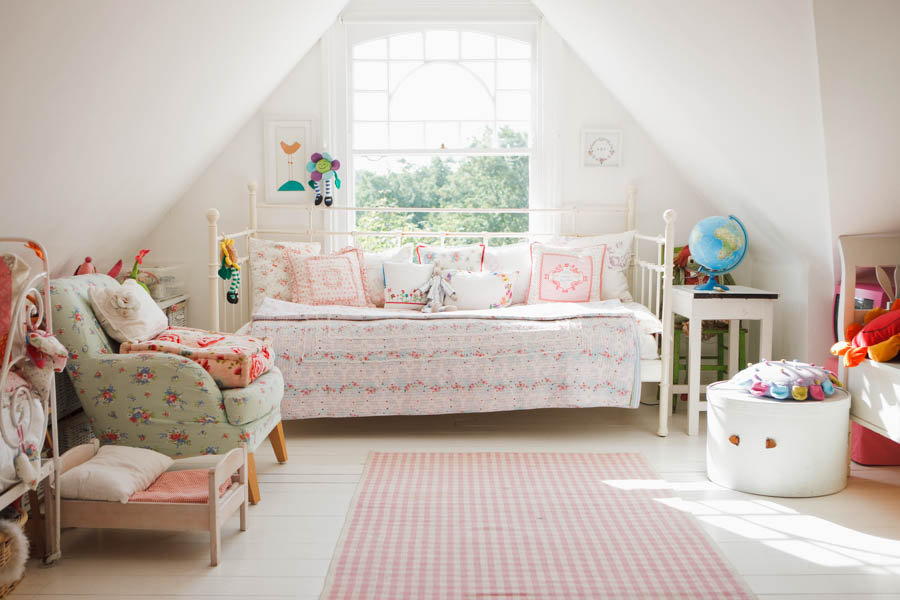
This is the original cottage-core revival style that became popular in the late 1980s, thanks to designer Rachel Ashwell who opened a home furnishings company with stores all over the country selling her upcycled flea market finds. Min Hogg, an interior design journalist, is credited with popularizing the term. Monica's apartment in 'Friends' is quintessential shabby chic with its mix of furniture styles, textures and finishes. The style has stayed with us because it's so comfortable, cozy and practical. The look features a combo of vintage and new furniture covered in machine-washable slipcovers that make it dog- and kid-proof, soft colors like rose, cream and light blue, and a romantic vibe that feels straight out of an English country cottage.
16. Southwestern
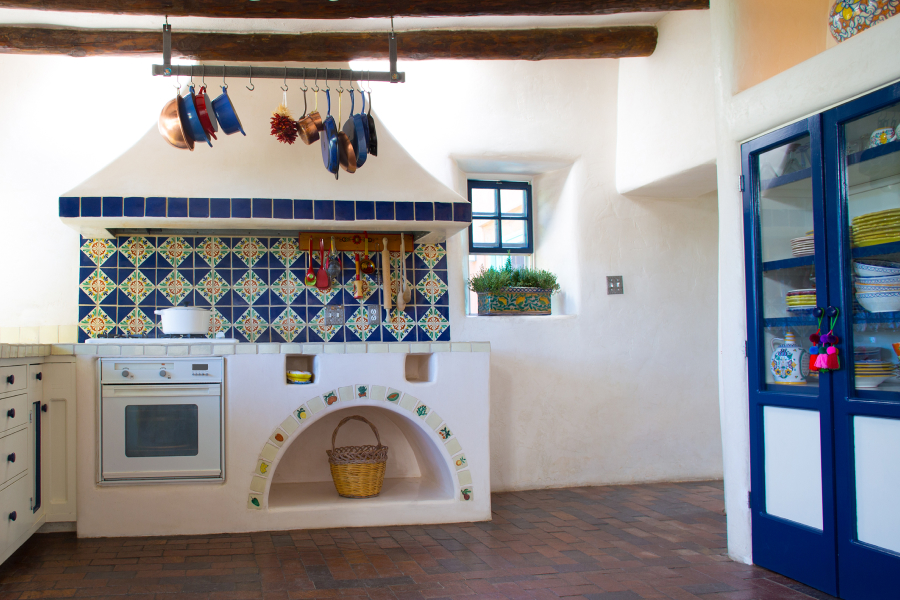
This design style is an amalgamation of Spanish, Native American and Mexican architecture, and culture of the American Southwest — specifically New Mexico and Arizona. Southwestern décor features Pueblo-revival features like heavy wood beams called vigas and color palettes that echo the desert: cactus greens, adobe beiges and whites, sky blue and turquoise, and fiery flourishes of deep orange, red and yellow. Furniture is made of distressed wood with metal accents, floors are tile and fabrics have bold graphic patterns based on Pueblo Indian design. Think adobe houses, kiva fireplaces and Navajo rugs in uncluttered rooms, with a big shot of boho style — see what we mean in this Scottsdale, Arizona home.
17. Modern
The term "modern" refers to a specific, early 20th-century design philosophy that emerged from movements like Bauhaus and was influenced by artists like Picasso. The modern style is defined by clean, unadorned lines, simple forms, functionality, and a strictly neutral color palette (blacks, whites, grays, and earth tones). Unlike contemporary (which refers to whatever is popular now), Modern style is timeless and deliberate, rejecting the elaborate ornamentation of past eras like Victorian design. Its emphasis on structure and order paved the way for styles like Midcentury Modern, but pure Modern design remains starkly minimal, focused on structural simplicity and an efficient use of space.
18. Traditional
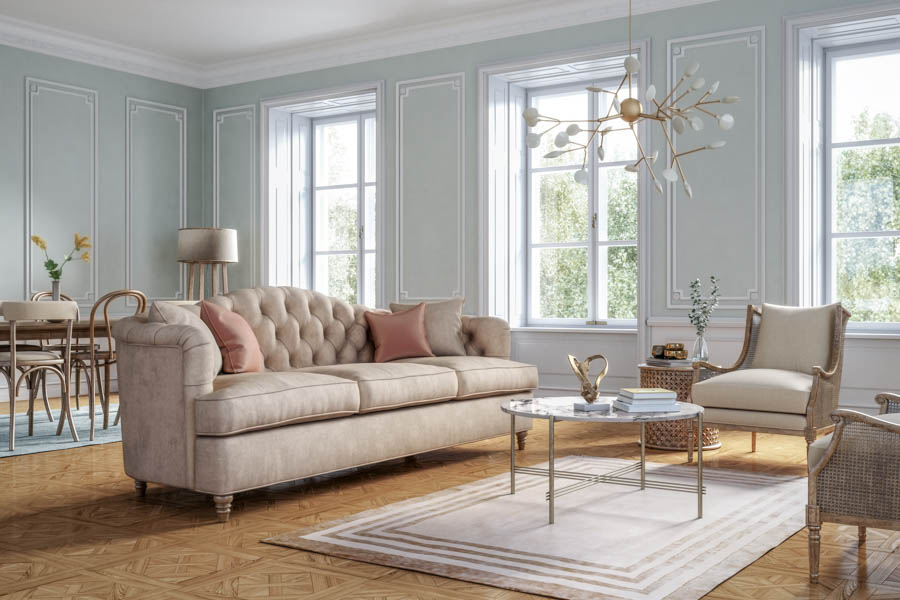
Just like the name says, traditional style steers clear of trends and goes for a timeless look. Think neutral walls in cream, white or beige as a backdrop for Chesterfield sofas, dark, ornate furniture in woods like cherry, walnut or chestnut, and upholstered pieces in brocade, dark leather and velvet. Fill a traditional space with antiques or new items that look like antiques. You want an old-school, inherited look in a traditional room. The keyword here is heirloom.
19. Transitional
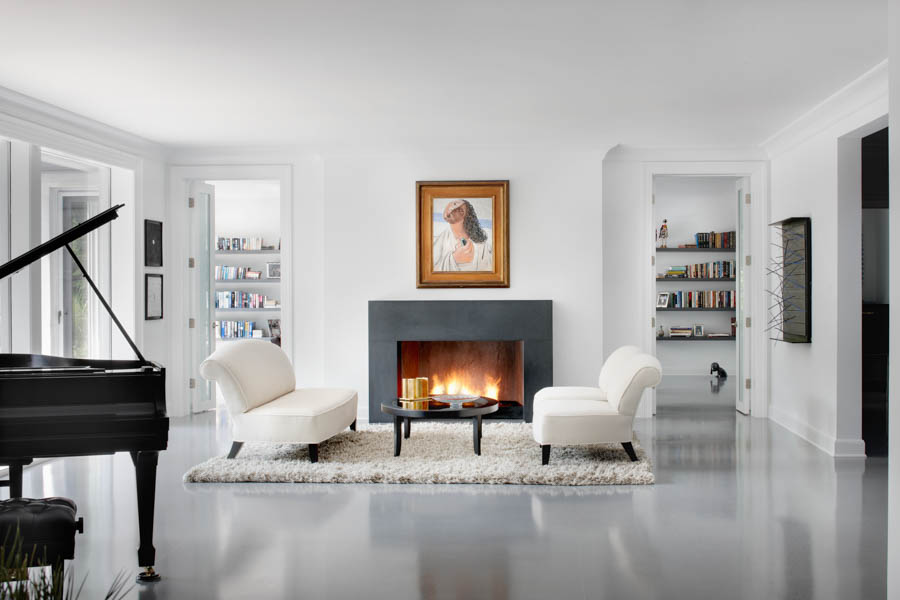
This is a popular style because it blends classic and contemporary elements into a comfortable, bespoke look. It's not too stuffy and not too contemporary. It's just right. Transitional blends sleek, clean lines with traditional details, and since it mixes eras and aesthetics, transitional rooms are timeless. Colors are minimal and calming. Think grays, tans, warm ivories. Deep colors like blues, browns and sage greens are used as accents. Rooms have textured fabric like chenille and suede on upholstery, rugs and drapes. And furniture steers clear from extremes. Go with an oversized sofa, not a Barcelona chair. Accessories stay on the minimal side.
20. Memphis

With simple shapes and pops of bright and fun colors as the main features, the Memphis interior design concept focuses on both form and function. Designed to create a playful and engaging space, patterns in this concept are often bold and clashing, creating an uninhibited and unique atmosphere that is undeniably unique and personal.
21. Hollywood Regency

The Hollywood Regency interior design style is inspired by the traditional and iconic concept of old-school Hollywood glamour. The design is a direct result of Hollywood’s golden age, which took place from the ’20s through the ’50s. Think gorgeous, gold, glam and uninhibitedly luxurious, with an emphasis on materials like velvet, satin, and faux fur. Far from minimalism, this maximalist design often features metallic flourishes on furniture and walls.
22. 1970s Revival

The 1970s are making a comeback in a big way, particularly in interior design. These days, though, you’ll notice a more modern, toned down twist on now-nostalgic, groovy style choices. You may see those avocado greens and burnt oranges here and there, but what really makes an interior a freshened callback to the 1970s are marrying more modern features with things like simple furniture forms — think low-slung chairs and couches, and even a conversation pit, if you’re lucky. Organic shapes (kidney bean sofas), textures (macramé and rattan) and materials (wood wall paneling) paired with clean lines give rooms in this design style a comfortable, calming aesthetic.
Now, it's time to test your knowledge:
Read next: 21 Types of Houses and 25 Home Styles to Fall in Love With
Ready for a new address?
Get an instant cash offer or list with a local partner agent.
Explore selling optionsRelated Articles
Sell your home with a winning strategy
Here’s how to maximize your home sale with the right selling plan.

Build a smart selling plan
Talk to your agent about their marketing approach - especially online - to ensure you’re getting the best possible price for your home.

